Cotoneaster Hedge: The Ultimate Guide To Planting Growing And Maintaining
Cotoneaster Hedge: The Ultimate Guide to Planting, Growing, and Maintaining
Cotoneaster hedges are a popular choice for gardeners because they are easy to care for, provide year-round interest, and attract wildlife. This blog post will provide you with everything you need to know about planting, growing, and maintaining a cotoneaster hedge.
Introduction
Cotoneaster is a genus of shrubs and small trees that are native to Europe, Asia, and North America. There are over 100 species of cotoneaster, and many of them are well-suited for use as hedges.
Cotoneaster hedges are typically evergreen or semi-evergreen, and they can grow to be 6-10 feet tall and wide. They have small, white or pink flowers in the spring, and they produce bright red or orange berries in the fall.
Cotoneaster hedges are easy to care for and they are relatively pest- and disease-free. They are also drought-tolerant and can withstand a wide range of soil conditions.
Main Content
Choosing the Right Cotoneaster Species
There are many different species of cotoneaster to choose from, so it is important to choose one that is suited to your climate and needs. Some popular species for hedges include:
- Cotoneaster horizontalis (spreading cotoneaster): This species is a low-growing shrub that is perfect for informal hedges. It is evergreen and has small, white flowers in the spring.
- Cotoneaster lacteus (silverleaf cotoneaster): This species is an evergreen shrub that has silvery-gray leaves. It is tolerant of shade and is a good choice for hedges in shady areas.
- Cotoneaster franchetti (franchetti cotoneaster): This species is an evergreen shrub that has dark green leaves. It is very tolerant of pruning and can be shaped into a formal hedge.
Planting a Cotoneaster Hedge
Cotoneaster hedges can be planted in the spring or fall. The best time to plant will depend on your climate. In warm climates, you may want to plant in the fall so that the roots have time to establish before the hot summer weather arrives. In cool climates, you may want to plant in the spring so that the hedge has time to grow before the cold winter weather arrives.
When planting a cotoneaster hedge, it is important to choose a site that gets full sun or partial shade. The soil should be well-drained and loamy.
To plant a cotoneaster hedge, dig a trench that is 2-3 feet wide and 1-2 feet deep. Space the plants 2-3 feet apart. Backfill the trench with soil and water the plants well.
Caring for a Cotoneaster Hedge
Cotoneaster hedges are relatively low-maintenance. They need to be watered regularly during the first year after planting. Once they are established, they are drought-tolerant and only need to be watered during dry periods.
Cotoneaster hedges should be pruned once a year in the late winter or early spring. The goal of pruning is to shape the hedge and remove any dead or diseased branches. You can also prune cotoneaster hedges to control their height and width.
Attracting Wildlife
Cotoneaster hedges are a great way to attract wildlife to your garden. The berries are a favorite food of birds, and the dense foliage provides shelter for small animals.
Conclusion
Cotoneaster hedges are a beautiful and versatile addition to any garden. They are easy to care for, they provide year-round interest, and they attract wildlife. If you are looking for a low-maintenance hedge that is both attractive and functional, then a cotoneaster hedge is a great option.
Cotoneaster hedges are a popular choice for gardeners because they are easy to care for and provide year-round interest. If you are thinking about planting a cotoneaster hedge, I recommend visiting Home Gardening for more information. This website has a wealth of information on cotoneaster hedges, including how to choose the right variety, how to plant and care for your hedge, and how to troubleshoot common problems.
FAQ of cotoneaster hedge
What is a cotoneaster hedge?
A cotoneaster hedge is a type of evergreen or semi-evergreen shrub that is commonly used to create privacy screens, windbreaks, or borders. Cotoneasters are relatively easy to care for and can tolerate a wide range of soil types and conditions.
What are the benefits of planting a cotoneaster hedge?
There are many benefits to planting a cotoneaster hedge, including:
- Privacy: Cotoneaster hedges can provide excellent privacy, blocking out unwanted views and noise.
- Windbreak: Cotoneaster hedges can also act as a windbreak, protecting your garden from strong winds.
- Borders: Cotoneaster hedges can be used to create attractive borders around your garden.
- Wildlife: Cotoneaster hedges provide food and shelter for birds and other wildlife.
How do I choose the right cotoneaster for my hedge?
When choosing a cotoneaster for your hedge, there are a few factors to consider, including:
- Size: Cotoneasters come in a variety of sizes, so you'll need to choose one that is appropriate for the space you have available.
- Color: Cotoneasters can have a variety of flower colors, so you can choose one that will complement the other plants in your garden.
- Hardiness: Cotoneasters are hardy in a variety of climates, but you'll need to choose one that is hardy in your specific area.
How do I plant a cotoneaster hedge?
To plant a cotoneaster hedge, you will need to:
- Prepare the soil by loosening it and adding compost or manure.
- Dig a trench that is the same depth as the root ball of the cotoneaster.
- Place the cotoneaster in the trench and backfill with soil.
- Water the cotoneaster thoroughly.
How do I care for a cotoneaster hedge?
Cotoneaster hedges are relatively easy to care for, but they do require some basic care, including:
- Watering: Cotoneasters need regular watering, especially during the first year after planting.
- Fertilizing: Cotoneasters should be fertilized once a year in the spring.
- Pruning: Cotoneaster hedges should be pruned in the spring to shape them and remove dead or diseased branches.
Image of cotoneaster hedge
- Cotoneaster hedge in full bloom. This image shows a cotoneaster hedge in full bloom, with its white flowers covering the branches. The hedge is trimmed into a regular shape, and it is located in a sunny spot.
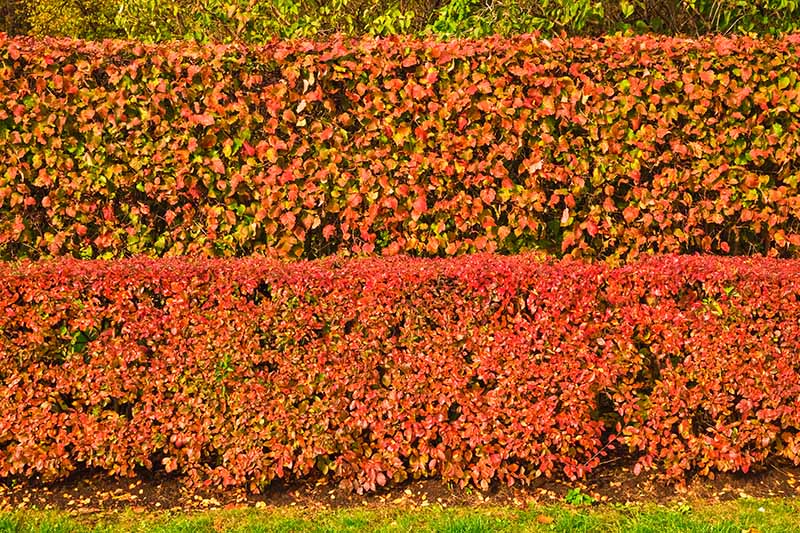
- Cotoneaster hedge in winter. This image shows a cotoneaster hedge in winter, with its red berries still clinging to the branches. The hedge is trimmed into a natural shape, and it is located in a shady spot.
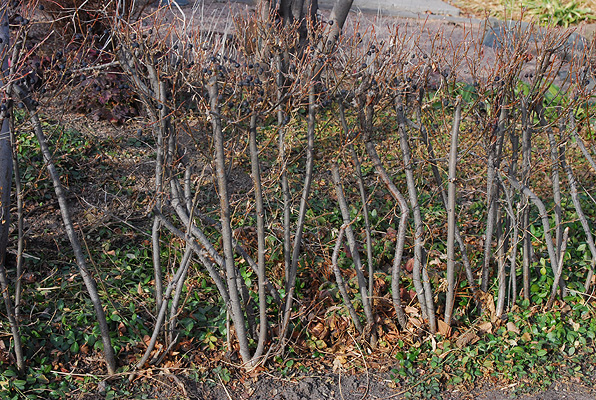
- Close-up of cotoneaster leaves. This image shows a close-up of cotoneaster leaves. The leaves are small and oval-shaped, and they are a dark green color.
-Leaf-Close-Up.jpg)
- Cotoneaster hedge with flowers and berries. This image shows a cotoneaster hedge with both flowers and berries. The flowers are white, and the berries are red. The hedge is trimmed into a regular shape, and it is located in a sunny spot.
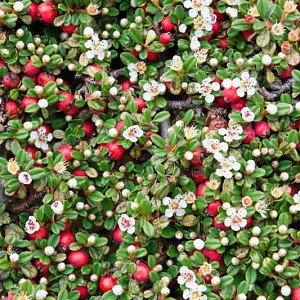
- Cotoneaster hedge as a privacy screen. This image shows a cotoneaster hedge being used as a privacy screen. The hedge is tall and dense, and it blocks the view of the neighbor's house.

- Cotoneaster hedge as a border. This image shows a cotoneaster hedge being used as a border. The hedge is short and neatly trimmed, and it separates the garden from the walkway.
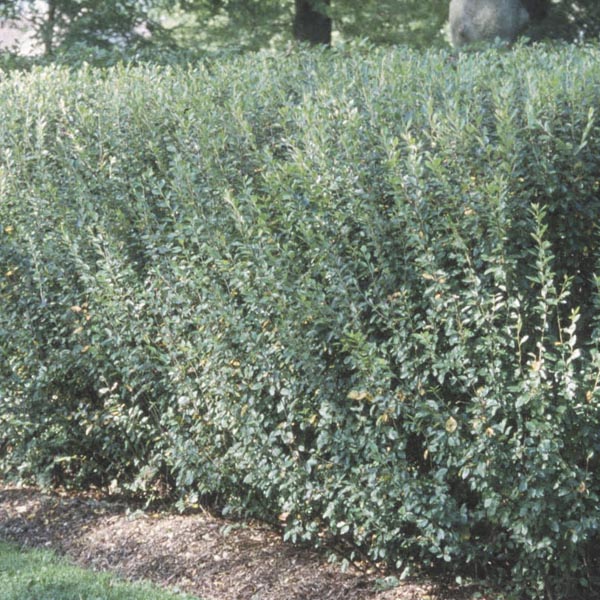
- Cotoneaster hedge in a formal garden. This image shows a cotoneaster hedge in a formal garden. The hedge is trimmed into a geometric shape, and it is located in the center of the garden.

- Cotoneaster hedge in a cottage garden. This image shows a cotoneaster hedge in a cottage garden. The hedge is trimmed into a natural shape, and it is located in the corner of the garden.
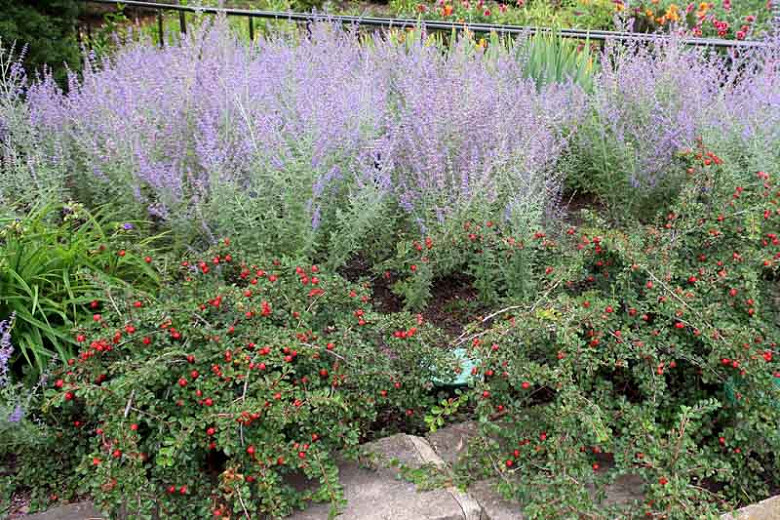
- Cotoneaster hedge in a woodland garden. This image shows a cotoneaster hedge in a woodland garden. The hedge is located in the shade of trees, and it is covered in red berries.

Post a Comment for "Cotoneaster Hedge: The Ultimate Guide To Planting Growing And Maintaining"